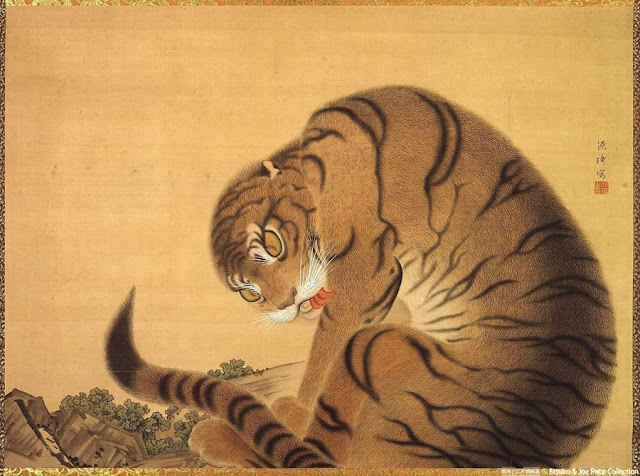Illustration from Anselmo va a scuola by Simona Mulazzani
It's been a month since my visit to Bologna, and though there are many more artists
and books I'd like to share, it's time for the blog to move on. But I will try to feature
a different children's book, illustrator or small publisher every week, in addition to
my usual postings. To conclude the fair reports, I want to talk a bit about one of
our precious Italian small publishers. In a period when most news related to my country
fall into the sad and embarassing cathegories, it's uplifting to witness the growing
creative vitality of our independent book publishers, away from the noise and nonsense
of the political arena, and unfortunately mostly ignored by our media and institutions.
A nice aspect to point out is that despite the general crisis, the sales of many of
these small companies are actually increasing, a sign that the reading public
is curious and selective, and rewards quality in its choices.
Topipittori is one of the children's publishers I like the best. And how could it be otherwise? Their outstanding catalogue of 53 volumes features
beautiful stories and some of my favorite contemporary illustrators. In fact, many
of them have already appeared on Animalarium, like Beatrice Alemagna, Violeta Lopiz,
Valerio Vidali, Gwénola Carrère, Kitty Crowther, Madalena Matoso, Simone Rea and
Camilla Engman. The company was founded six years ago in Milan by Paolo Canton
and Giovanna Zoboli, who is also an author and wrote quite a few of Topipittori's books.
at Topipittori's fair booth, since they have recently published the Italian edition of
all their other titles are original productions which, in turn, are increasingly finding
coeditors around the world, from Asia to Latin America.


One of the new animal-themed titles this year is Vorrei avere... (I wish I had...),
written by Giovanna Zoboli and beautifully illustrated by Simona Mulazzani. In the words of its publisher, Vorrei avere... is "a tribute to the perfection of animals through the
loving care of a child who passionately desires to possess their extraordinary abilities".
I haven't bought the book yet, but I do own and love Al supermercato degli animali
(In the animals' supermarket) by the same creative duo, which introduces children
to natural foods and the eating habits of animals through its fun concept,
simple rhymes and colorful artworks.
I personally discovered Topipittori through another book by Zoboli, Due scimmie in cucina,
a story about a little boy who loves monkeys (like most of us!) and his very busy sister.
I love the playful text but honestly, as usual, the bright and modern illustrations by
Milanese graphic designer, illustrator and art director, whose distinctive artworks
define the house style of book publisher Guanda. 
The illustration above is from one of Topipittori's new productions, the gorgeous
and dreamy Una storia Guaraní by Alicia Badalan, inspired by traditional beliefs of
narrated by Perrine Ledan and illustrated by Lotte Brauning.
Lion and mice by Simone Rea
And next fall, I'll be waiting for Aesop's fables illustrated by Simone Rea
and new titles from Valerio Vidali and Camilla Engman!
 Nikolaj Kuprejanov for Zverinec (The menagerie), 1930
Nikolaj Kuprejanov for Zverinec (The menagerie), 1930









































